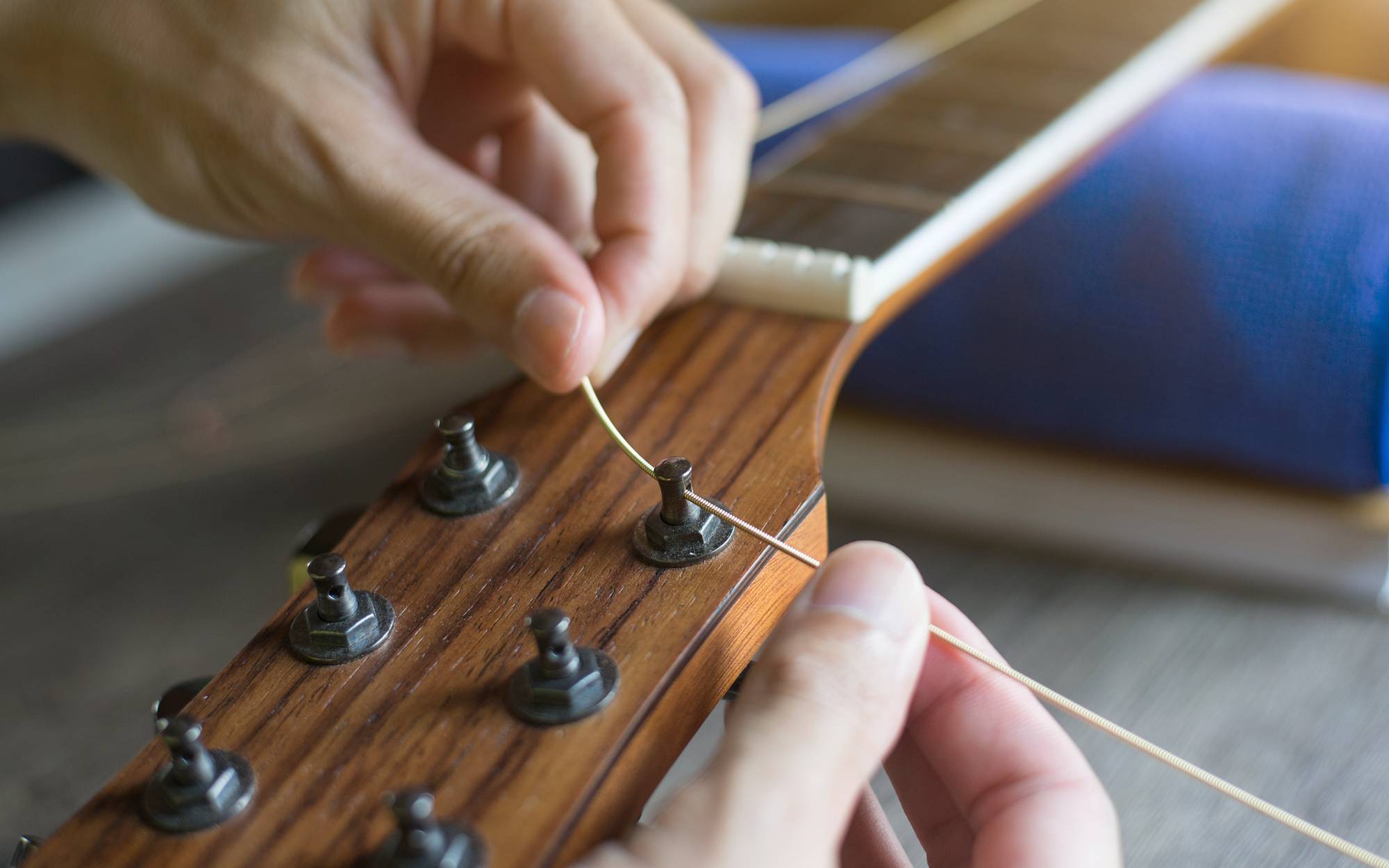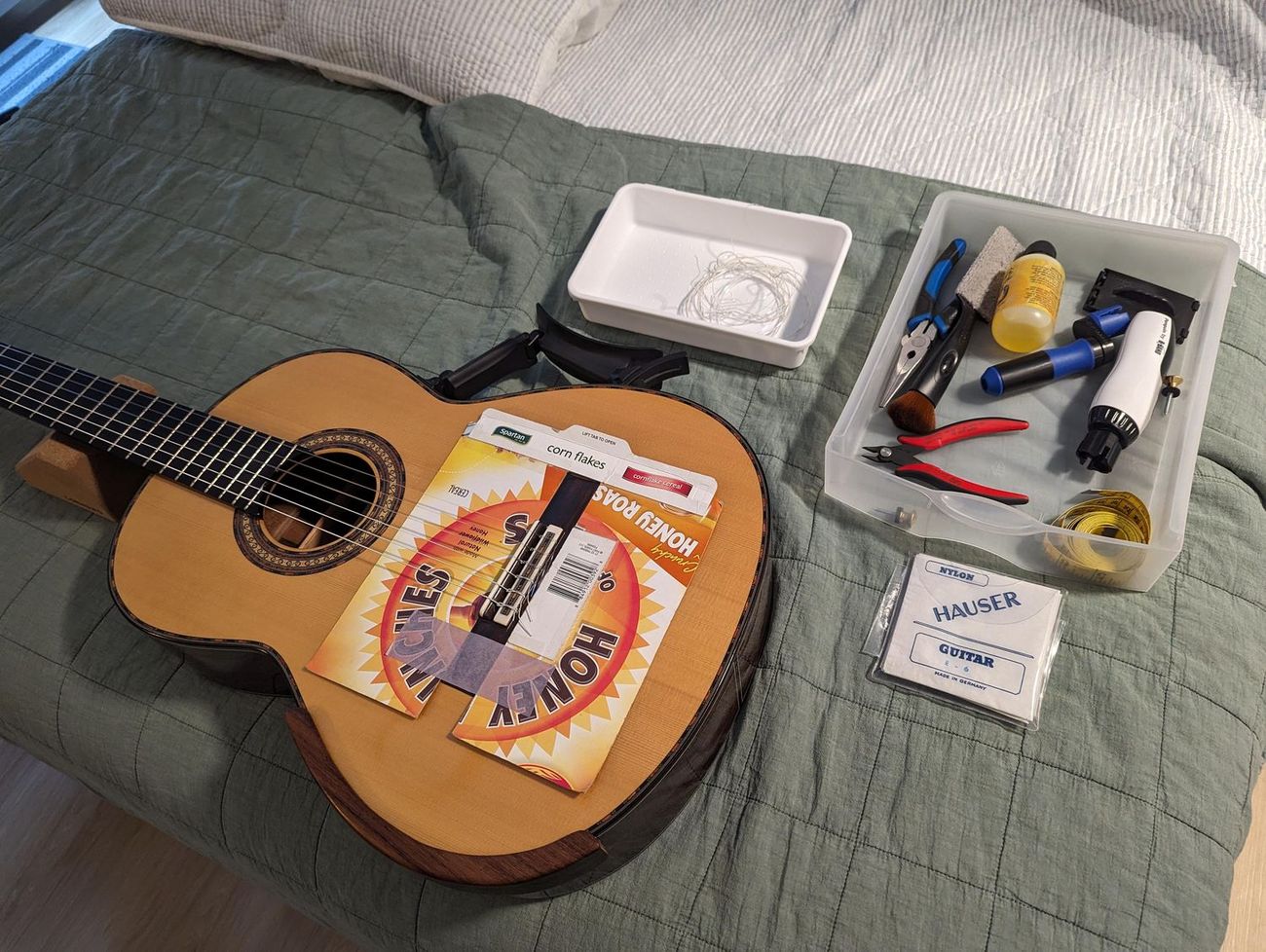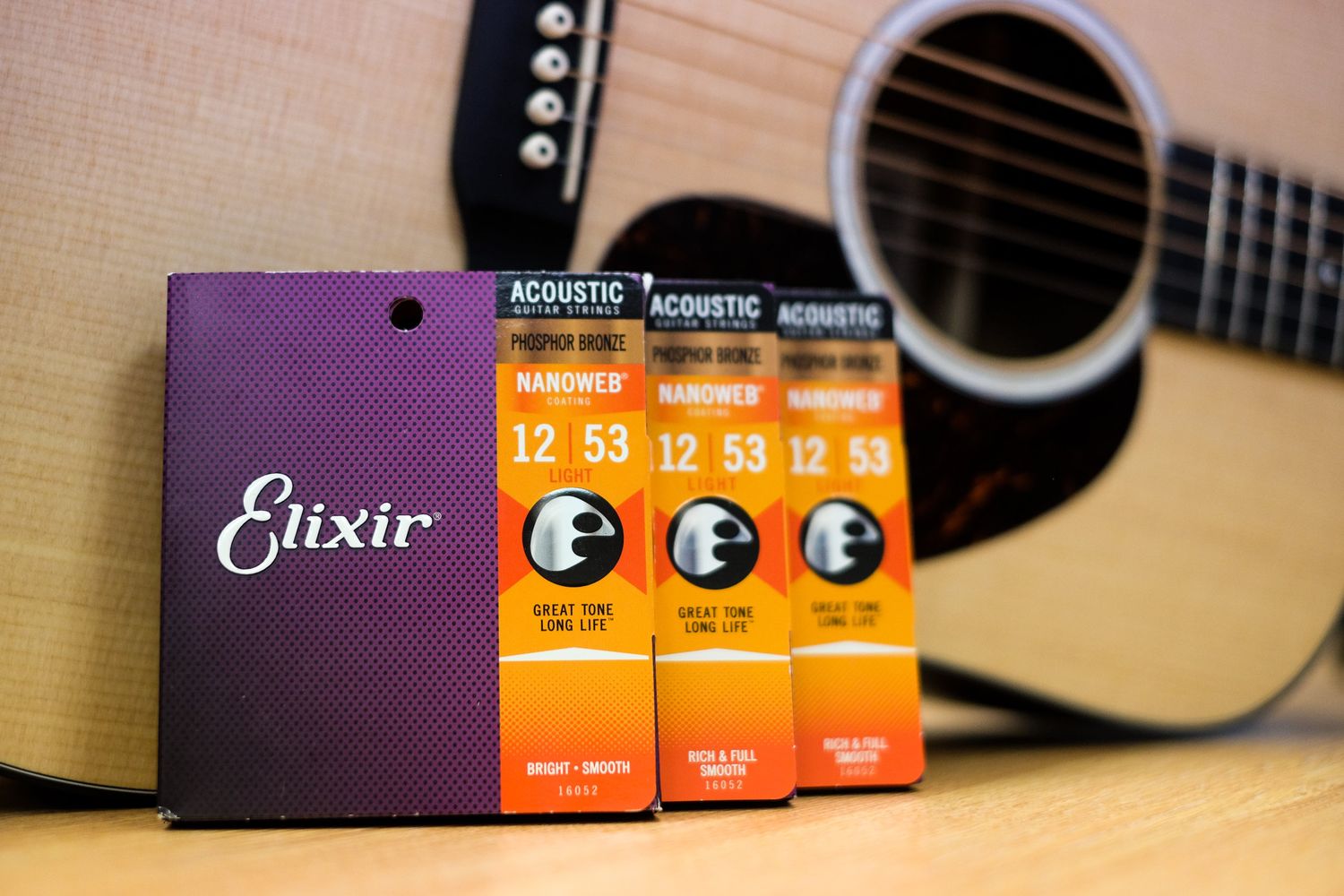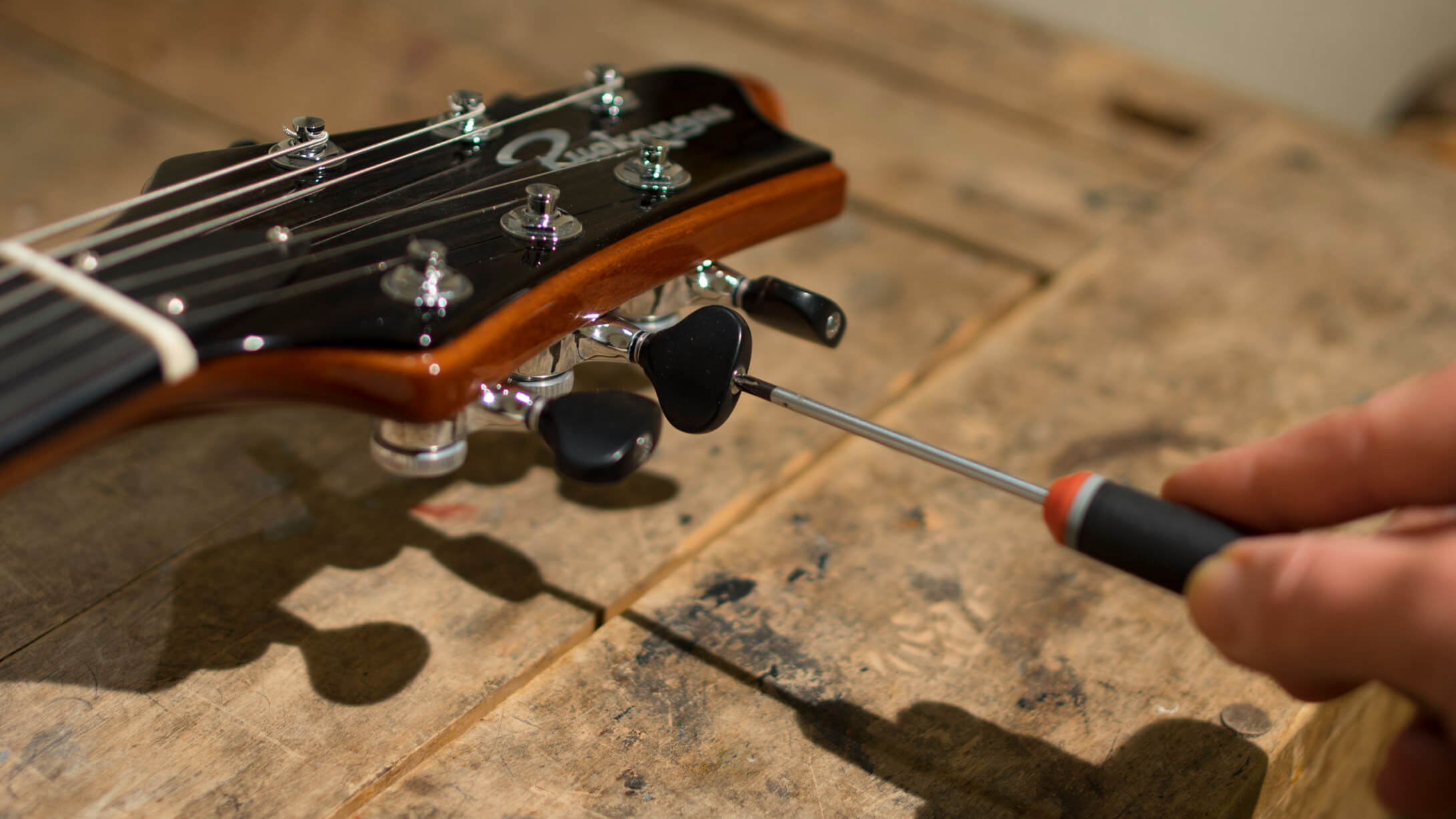Home>Production & Technology>Acoustic>How To Tune A 12-String Acoustic Guitar


Acoustic
How To Tune A 12-String Acoustic Guitar
Published: March 11, 2024
Learn how to tune a 12-string acoustic guitar with our step-by-step guide. Keep your acoustic guitar sounding its best with our expert tips and techniques.
(Many of the links in this article redirect to a specific reviewed product. Your purchase of these products through affiliate links helps to generate commission for AudioLover.com, at no extra cost. Learn more)
Table of Contents
Introduction
Tuning a 12-string acoustic guitar is a crucial aspect of maintaining its rich, resonant sound. Whether you're a seasoned musician or a novice player, understanding the intricacies of tuning a 12-string acoustic guitar is essential for producing harmonious melodies. This comprehensive guide will walk you through the step-by-step process of tuning your instrument, ensuring that you achieve the perfect balance of tones and maintain the guitar's optimal performance.
Tuning a 12-string acoustic guitar involves more than just adjusting the strings to the correct pitches. It requires a keen understanding of the instrument's unique construction and the interplay between its paired strings. By mastering the art of tuning, you can unlock the full potential of your 12-string acoustic guitar, allowing its vibrant, full-bodied sound to resonate with clarity and precision.
In the following sections, we will delve into the intricacies of tuning a 12-string acoustic guitar, exploring the tools and materials needed, as well as the step-by-step process for changing the strings, tuning the guitar, adjusting the intonation, and ensuring proper tuning. Whether you're preparing for a live performance, a recording session, or simply seeking to elevate your playing experience, this guide will equip you with the knowledge and skills to tune your 12-string acoustic guitar with confidence and precision.
As we embark on this journey, it's important to approach the process of tuning with patience and attentiveness. Each step plays a crucial role in achieving the desired sound, and by following the guidelines outlined in this article, you'll be well on your way to mastering the art of tuning a 12-string acoustic guitar. So, let's dive in and explore the world of 12-string acoustic guitar tuning, unlocking the full potential of this remarkable instrument.
Understanding the 12-String Acoustic Guitar
The 12-string acoustic guitar is a marvel of musical craftsmanship, renowned for its rich, resonant sound and distinctive tonal qualities. Unlike its 6-string counterpart, the 12-string acoustic guitar features pairs of strings, with each pair tuned to the same note. This unique configuration creates a lush, chorus-like effect, enriching the instrument's sound with harmonic depth and complexity.
At its core, the 12-string acoustic guitar embodies a harmonious duality, blending the familiar tonal range of a standard guitar with the added dimension of paired strings. The lower four pairs of strings consist of a wound string paired with a thinner, octave-tuned string, while the upper two pairs are tuned in unison. This arrangement contributes to the guitar's signature resonance, producing a full, orchestral-like sound that captivates listeners with its depth and richness.
The doubled strings on a 12-string acoustic guitar not only expand the instrument's sonic palette but also introduce a unique set of challenges and considerations when it comes to tuning and maintenance. The paired strings must be carefully balanced to ensure uniform tension and pitch accuracy, requiring a nuanced approach to achieve optimal tuning stability.
Furthermore, the increased string tension resulting from the additional strings necessitates meticulous care and maintenance to uphold the guitar's structural integrity and playability. Understanding the intricacies of string tension, neck relief, and bridge adjustments is paramount for preserving the 12-string acoustic guitar's impeccable tonal character and playability.
In the realm of musical expression, the 12-string acoustic guitar offers a versatile canvas for artists to explore a wide range of genres and musical styles. From folk and blues to rock and beyond, the instrument's evocative resonance and shimmering, ethereal quality have cemented its status as a beloved staple in the world of acoustic music.
In essence, the 12-string acoustic guitar represents a harmonious fusion of tradition and innovation, embodying a timeless allure that continues to captivate musicians and audiences alike. By delving into the nuances of its construction, tonal characteristics, and expressive potential, we gain a deeper appreciation for the 12-string acoustic guitar's enduring legacy and its profound impact on the world of music.
Tools and Materials Needed
Tuning a 12-string acoustic guitar requires the use of specific tools and materials to ensure precision and efficiency throughout the process. By assembling the necessary items, you can streamline the tuning procedure and maintain the optimal performance of your instrument. Here's a comprehensive list of the essential tools and materials needed for tuning a 12-string acoustic guitar:
1. Quality Guitar Tuner:
A reliable guitar tuner is indispensable for achieving accurate and consistent tuning. Whether you opt for a clip-on tuner or a pedal tuner, ensure that it is designed to accommodate the unique tuning requirements of a 12-string acoustic guitar. Digital tuners with chromatic capabilities are particularly beneficial, allowing for precise tuning of each string across a wide range of pitches.
2. String Winder:
A string winder facilitates the swift and effortless removal and installation of guitar strings. Given the 12-string acoustic guitar's doubled string configuration, a string winder significantly expedites the string-changing process, saving time and effort while ensuring uniform tension and stability.
3. High-Quality Guitar Strings:
Selecting the right set of guitar strings is paramount to achieving optimal tone and playability. When choosing strings for a 12-string acoustic guitar, consider the gauge, material, and winding type to align with your playing style and tonal preferences. High-quality, corrosion-resistant strings contribute to sustained tuning stability and longevity.
4. Soft Cloth and Guitar Polish:
Maintaining the cleanliness and luster of your guitar is essential for preserving its aesthetic appeal and structural integrity. A soft cloth and guitar polish or cleaner are indispensable for removing smudges, fingerprints, and debris from the guitar's body, neck, and fretboard, enhancing its visual allure and prolonging its lifespan.
5. String Cutter:
A precision string cutter enables clean and accurate trimming of excess string length after installation. This ensures that the strings are properly secured and eliminates potential interference with the tuning pegs or bridge, promoting smooth tuning adjustments and minimizing the risk of string slippage.
6. Guitar Maintenance Tools:
Basic guitar maintenance tools, such as a truss rod wrench, screwdrivers, and fretboard conditioner, are valuable for addressing minor adjustments and upkeep. These tools empower you to fine-tune the guitar's playability, neck relief, and overall performance, contributing to a satisfying playing experience.
By equipping yourself with these essential tools and materials, you can embark on the journey of tuning your 12-string acoustic guitar with confidence and precision. Each item plays a pivotal role in ensuring that the tuning process is seamless, efficient, and conducive to maintaining the instrument's exceptional tonal character and playability. With the right tools at your disposal, you are poised to unlock the full sonic potential of your 12-string acoustic guitar, enriching your musical endeavors with its captivating resonance and expressive versatility.
Step 1: Changing the Strings
Changing the strings of a 12-string acoustic guitar is a fundamental aspect of maintaining its optimal tonal quality and playability. Over time, guitar strings accumulate dirt, sweat, and oils from the player's fingers, leading to diminished tone and responsiveness. Additionally, the constant tension and stress placed on the strings during playing can cause them to lose their elasticity and vibrancy. Therefore, regular string changes are essential for preserving the guitar's sonic integrity and ensuring a satisfying playing experience.
The process of changing the strings on a 12-string acoustic guitar begins with removing the old strings. Using a string winder, carefully unwind each string from the tuning pegs, taking note of the specific pairing and octave configuration. As the strings are removed, it's important to inspect the bridge and saddle for any accumulated debris or wear, addressing any maintenance needs to uphold the guitar's structural integrity.
Once the old strings are removed, thoroughly clean the guitar's body, fretboard, and headstock using a soft cloth to remove any residual dirt or grime. This step not only enhances the guitar's visual appeal but also prevents contaminants from affecting the new strings' performance and longevity.
Next, select a high-quality set of guitar strings specifically designed for a 12-string acoustic guitar. Consider factors such as string gauge, material, and winding type to align with your playing style and tonal preferences. When installing the new strings, pay close attention to the octave strings, ensuring that they are paired correctly with their respective wound strings to maintain the instrument's balanced tonal character.
Using a string cutter, trim the excess string length after installation, ensuring that the strings are securely anchored to the tuning pegs without unnecessary slack. This meticulous approach promotes tuning stability and minimizes the risk of string slippage during play, allowing for precise adjustments and sustained tonal clarity.
By meticulously changing the strings of your 12-string acoustic guitar, you not only rejuvenate its sonic potential but also uphold its structural integrity and playability. This foundational maintenance task sets the stage for achieving optimal tuning stability and tonal richness, laying the groundwork for a rewarding musical journey with your 12-string acoustic guitar.
Step 2: Tuning the Guitar
Tuning a 12-string acoustic guitar is a meticulous process that demands precision and attentiveness to achieve harmonious resonance and tonal balance. As you embark on the journey of tuning your instrument, it's essential to approach each string with care and patience, ensuring that the paired strings are perfectly aligned to produce the distinctive chorus-like effect that defines the 12-string acoustic guitar's captivating sound.
Begin by securing a high-quality guitar tuner designed to accommodate the unique tuning requirements of a 12-string acoustic guitar. Whether opting for a digital tuner with chromatic capabilities or a clip-on tuner, the key is to select a reliable tool that provides accurate and responsive tuning feedback across the instrument's wide tonal range.
With the tuner in hand, start by tuning the lower four pairs of strings, each consisting of a wound string paired with a thinner, octave-tuned string. Carefully pluck each pair of strings, adjusting the tuning pegs to match the desired pitches indicated by the tuner. It's crucial to tune both strings within each pair simultaneously, ensuring that they resonate in perfect harmony and maintain consistent tension.
Moving on to the upper two pairs of strings, which are tuned in unison, apply the same methodical approach, fine-tuning the strings to achieve precise pitch alignment. As you progress through the tuning process, listen attentively to the interplay of the paired strings, allowing their combined resonance to guide your adjustments and ensure a balanced, cohesive sound.
Throughout the tuning procedure, pay close attention to the tension and feel of the strings, gauging their responsiveness and stability as you bring them to the desired pitches. By maintaining uniform tension across the paired strings and aligning them with meticulous accuracy, you lay the foundation for a harmonically rich and sonically immersive playing experience.
As the tuning process nears completion, take a moment to strum the fully tuned 12-string acoustic guitar, allowing its resonant chords to fill the air with a symphony of vibrant, interwoven tones. Embrace the enchanting depth and complexity of the instrument's sound, knowing that your dedication to precise tuning has unlocked its full sonic potential, ready to inspire and captivate both performer and audience alike.
In essence, tuning a 12-string acoustic guitar transcends the realm of technicality, evolving into a meditative and transformative experience that fosters a profound connection between musician and instrument. With each string meticulously tuned and every harmonic resonance finely balanced, the 12-string acoustic guitar becomes a conduit for boundless musical expression, inviting players to embark on a journey of sonic discovery and creative exploration.
Step 3: Adjusting the Intonation
Adjusting the intonation of a 12-string acoustic guitar is a critical step in ensuring that the instrument produces accurate and harmonically balanced tones across the fretboard. Intonation refers to the guitar's ability to play in tune at various positions along the neck, allowing chords and individual notes to resonate with clarity and precision. Given the doubled string configuration of a 12-string acoustic guitar, meticulous attention to intonation is paramount for achieving uniform pitch accuracy and tonal consistency.
To begin the process of adjusting the intonation, it's essential to utilize a high-quality electronic tuner capable of providing precise pitch measurements. With the tuner in place, fret the 12th fret of each string and observe the tuner's feedback. Ideally, the pitch indicated by the tuner should align perfectly with the natural harmonic at the 12th fret. If the pitch deviates sharp or flat, adjustments to the string's saddle position are necessary to rectify the intonation.
Using a screwdriver or appropriate tool, carefully adjust the saddle position for each string, either forward or backward, to achieve the desired intonation. When a string's pitch at the 12th fret does not match the harmonic pitch, the saddle must be repositioned to lengthen or shorten the vibrating length of the string, thereby aligning its intonation with the fretted notes.
As you make incremental adjustments to the saddle positions, periodically recheck the intonation by fretting the 12th fret and comparing the pitch to the tuner's indication. This iterative process allows for fine-tuning the intonation of each string, ensuring that the guitar resonates with impeccable accuracy and tonal integrity across its entire range.
The significance of precise intonation cannot be overstated, as it directly impacts the guitar's playability and tonal character. By meticulously adjusting the intonation of a 12-string acoustic guitar, players can unleash the instrument's full expressive potential, enabling seamless transitions between chords and facilitating the articulation of melodic passages with unwavering clarity and resonance.
In essence, the process of adjusting the intonation embodies a commitment to sonic excellence, elevating the 12-string acoustic guitar to a realm of unparalleled tonal refinement and musical versatility. With each string's intonation meticulously calibrated, the instrument becomes a conduit for boundless creativity, empowering players to explore a vast sonic landscape with unwavering precision and expressive depth.
Step 4: Checking for Proper Tuning
Ensuring proper tuning is the final crucial step in the comprehensive process of maintaining a 12-string acoustic guitar. This step serves as the ultimate validation of the meticulous efforts invested in changing strings, tuning the guitar, and adjusting the intonation. By conducting a thorough assessment of the instrument's tuning, players can ascertain the harmonious resonance and tonal balance essential for delivering captivating musical performances and immersive playing experiences.
To begin the assessment, it is imperative to rely on both auditory perception and visual confirmation. Strumming the fully tuned 12-string acoustic guitar allows the player to immerse themselves in the symphony of interwoven tones, listening attentively to the harmonic richness and balanced resonance emanating from the instrument. The chords and individual notes should resonate with clarity and cohesion, creating a sonic tapestry that captivates both performer and audience alike.
In conjunction with auditory evaluation, visual confirmation through a reliable electronic tuner provides precise pitch measurements, validating the accuracy of the tuning across the instrument's wide tonal range. By observing the tuner's feedback for each string, players can ensure that the pitches align with the desired notes, affirming the instrument's readiness for musical expression.
Furthermore, conducting a series of chord progressions and melodic passages allows players to gauge the guitar's responsiveness and tonal consistency, affirming that the tuning stability and harmonic balance are upheld across various playing techniques and musical contexts. This dynamic assessment reinforces the confidence in the instrument's ability to deliver a captivating and expressive performance, empowering players to explore a diverse repertoire with unwavering precision and tonal integrity.
Ultimately, the process of checking for proper tuning represents the culmination of meticulous care and attention dedicated to the 12-string acoustic guitar. It signifies the transformation of technical precision into a conduit for boundless musical expression, where every note and chord resonates with clarity, depth, and emotive resonance. With the instrument finely tuned and harmonically balanced, players are poised to embark on a musical journey filled with sonic discovery, creative exploration, and the profound joy of bringing music to life through the enchanting voice of the 12-string acoustic guitar.











